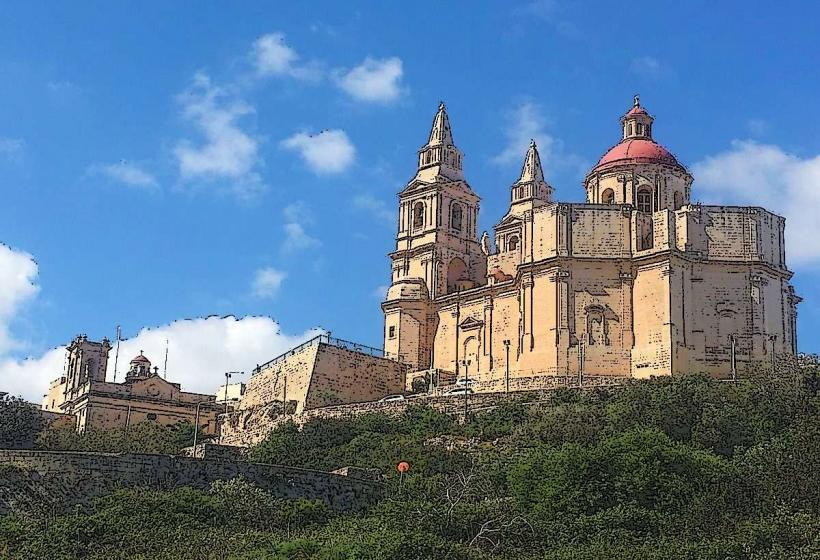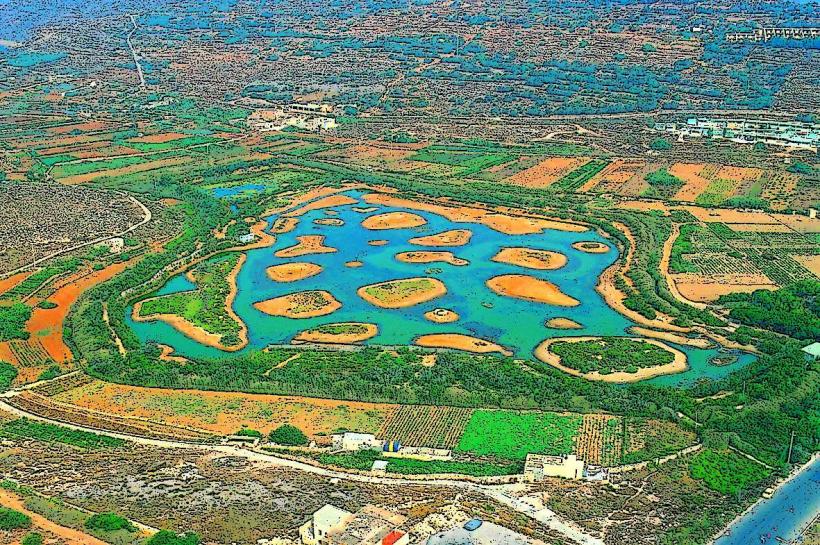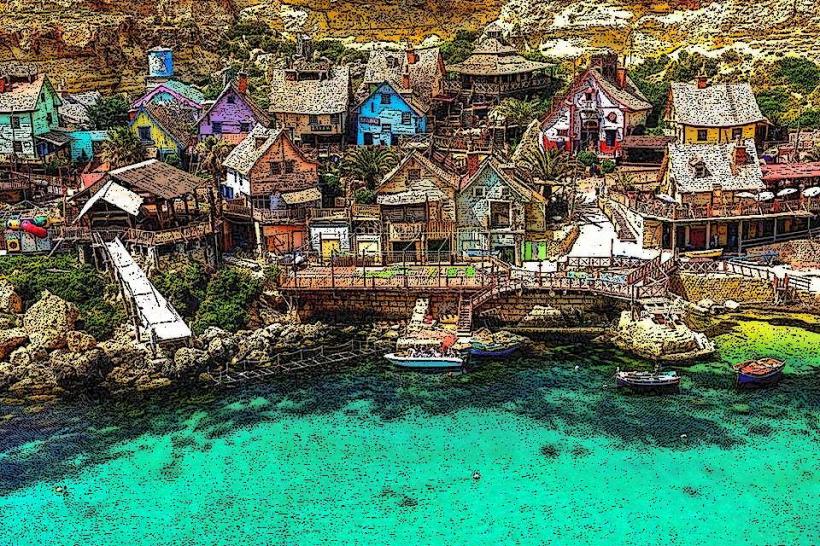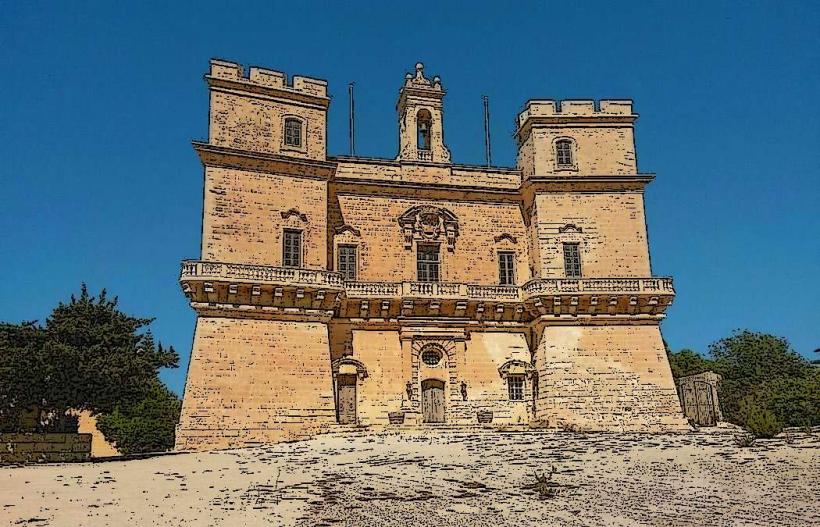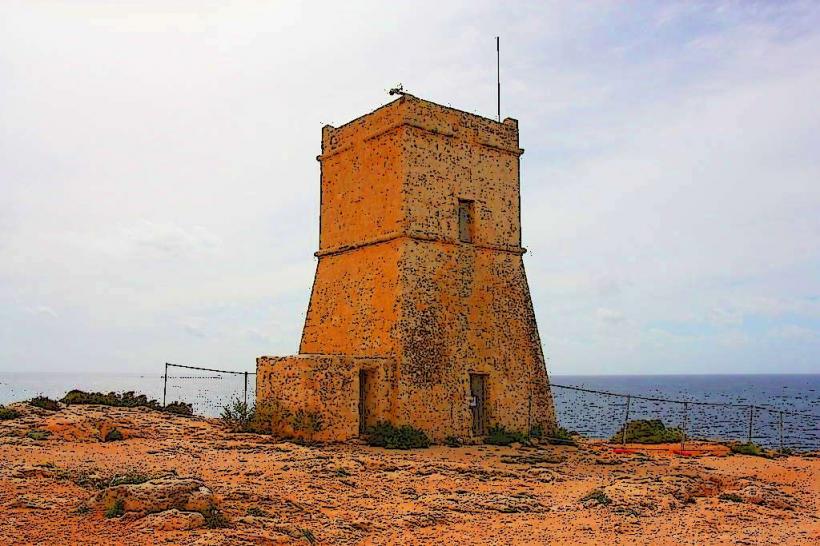Information
Landmark: St. Agatha's Tower (Red Tower)City: Mellieha
Country: Malta
Continent: Europe
St. Agatha’s Tower, commonly known as the Red Tower, is a historic watchtower located on the north coast of Malta, near the village of Mellieħa. It is one of the best-preserved examples of the many coastal fortifications built by the Knights of St. John in the 17th century to defend the island against pirate raids and potential invasions. The tower is named after Saint Agatha, the patron saint of Mellieħa, and is a prominent landmark in the region, offering stunning views of the surrounding landscape and the Mediterranean Sea.
History and Background
- Construction: St. Agatha’s Tower was built in 1647 during the reign of Grand Master Jean Parisot de la Valette, the 49th Grand Master of the Order of St. John. The tower was part of a series of coastal defenses constructed by the Knights of St. John to protect the island from potential attacks, especially from pirates and foreign invaders.
- The tower’s strategic position on a high point allowed it to keep watch over the Mellieħa Bay and surrounding areas, including the Gozo Channel, a crucial maritime route.
- It was initially built as a red sandstone tower, which gave it the nickname "Red Tower." The use of red stone was not only aesthetic but also practical, as it helped the tower blend in with the natural landscape, making it harder for enemies to spot from a distance.
Architecture and Design
- Structure: St. Agatha’s Tower is a three-story building with a square base and a high, narrow structure. The design is typical of other coastal towers built by the Knights, featuring a central stairwell, windows, and a roof terrace used for observation and defense.
- Red Color: The distinctive red color of the tower comes from the use of local red limestone in its construction. The reddish hue helped the structure blend with the natural color of the surrounding landscape, which is mostly characterized by rocky hills and vegetation.
- Defensive Features: The tower was designed primarily for defense. It has narrow windows (or "embrasures") that were used for both observation and shooting. The top floor had a large open terrace that would have been used for lookouts, and at one point, cannons were mounted on the terrace to provide firepower in the event of an attack.
Role and Function
- Watchtower: The main role of St. Agatha’s Tower was to monitor the coast and provide early warning of approaching ships, pirates, or enemy forces. The tower was manned by a small garrison, often made up of local soldiers and a watchman who kept an eye on the surrounding waters and coastline.
- Communication: In the event of an enemy sighting, the tower was equipped with signals, such as flags or smoke, to alert other parts of the island and nearby fortifications. The proximity of the tower to other defensive structures, such as the Mellieħa Fort, allowed for effective communication between watchtowers and other defenses.
Later History and Restoration
- Decline: After the Knights of St. John left Malta in 1798, the island underwent significant political changes. The watchtowers, including St. Agatha’s Tower, fell into disrepair during the French occupation and later under British rule, when many of the coastal defenses became obsolete.
- Restoration: In the late 20th century, St. Agatha’s Tower was restored and preserved as part of an effort to maintain Malta’s historical fortifications. The tower is now under the care of the Malta Environment and Planning Authority (MEPA) and is a popular tourist attraction.
Visitor Experience
- Panoramic Views: One of the main attractions of St. Agatha’s Tower is its location, offering panoramic views of Mellieħa Bay, the nearby Għadira Nature Reserve, and the Gozo Channel. On a clear day, visitors can even see the neighboring island of Gozo and the coastline of Sicily in the distance.
- Tourism: Today, visitors to the tower can explore the three levels of the building, including the roof terrace, which provides an excellent vantage point. Inside, the tower houses exhibits related to Malta’s history, particularly its coastal defense systems and the role of the Knights of St. John in protecting the island.
- Museum Exhibits: Inside the tower, there are informative displays about the Knights of St. John, coastal defense structures, and the tower’s history. The tower’s small museum offers insights into the military history of the island and the defensive strategies employed by the Knights.
- Photography and Relaxation: The surrounding area is ideal for photography and relaxation. The rocky coastline, vegetation, and the Mediterranean create a peaceful setting for visitors to enjoy the natural beauty of Malta.
Location and Accessibility
- Location: St. Agatha’s Tower is located on a hilltop above the northern coast of Malta, in the vicinity of Mellieħa. The tower overlooks Mellieħa Bay and provides excellent views of the surrounding area.
- Access: The tower is accessible by car or public transport, and visitors can reach the site from the nearby Mellieħa village. It is located close to other popular attractions, including the Mellieħa Bay, Għadira Nature Reserve, and Popeye Village, making it an easy stop for tourists exploring the northern part of Malta.
- Opening Hours and Entry: The tower is open to the public throughout the year, and entry is usually through a small admission fee. Opening hours can vary depending on the season, so it’s recommended to check ahead before visiting.
Conclusion
St. Agatha’s Tower (Red Tower) is a significant historical monument in Malta, offering visitors a glimpse into the island’s military past and the Knights of St. John’s coastal defense system. With its striking red color, strategic location, and spectacular views, it remains one of Malta’s most iconic landmarks. Whether you're interested in history, architecture, or simply enjoying the stunning views of the Mediterranean Sea, the Red Tower offers an enriching experience for all visitors.

